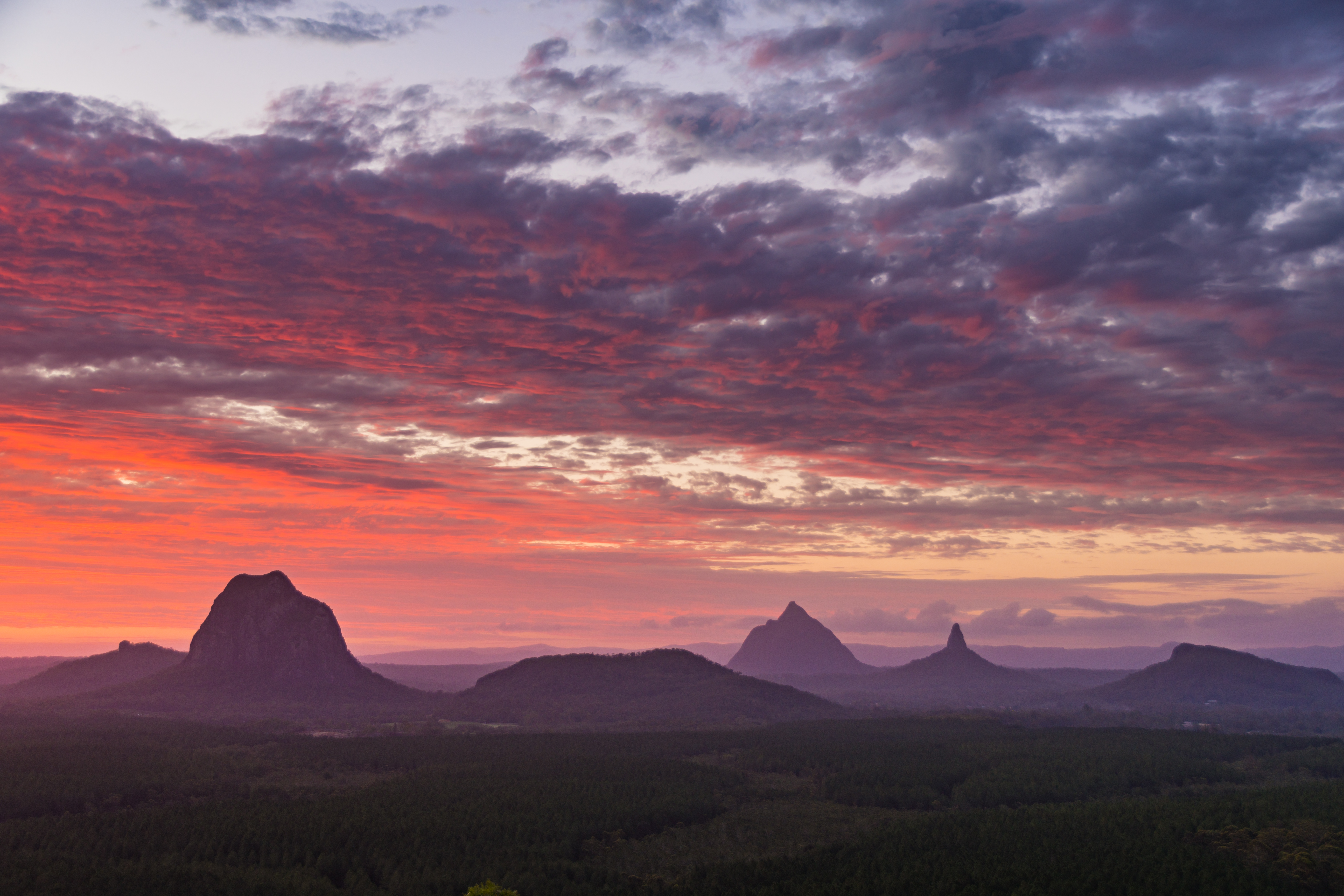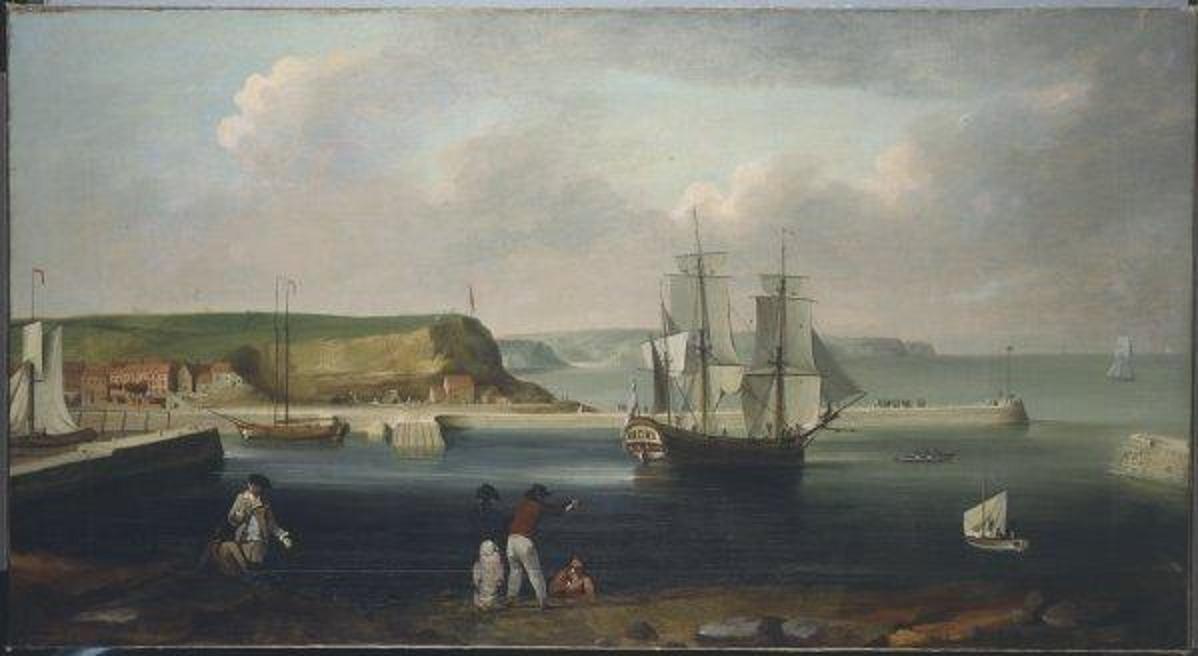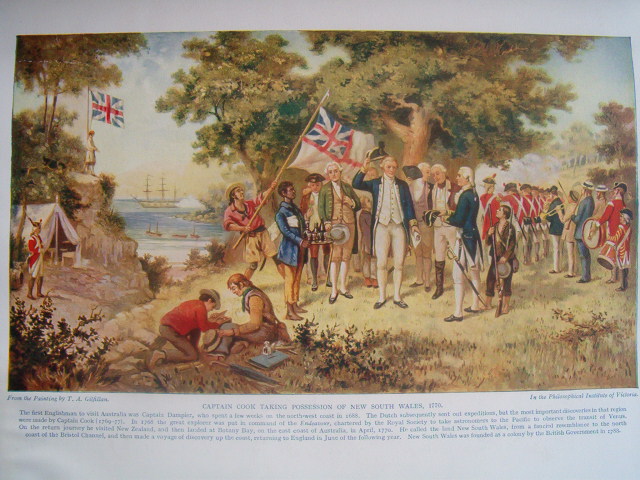|
History Of Queensland
The history of Queensland encompasses both a long Aboriginal Australian presence as well as the more recent periods of European colonisation and as a state of Australia.A History of Queensland by Raymond Evans, Cambridge University Press, 2007 () Before being charted and claimed for the Kingdom of Great Britain by Lieutenant James Cook in 1770, the coast of north-eastern Australia was explored by Dutch and French navigators. Queensland separated from the Colony of New South Wales as a self-governing Crown colony in 1859. In 1901 it became one of the six founding states of Australia. Indigenous people Established theories estimate that between 50,000 to 60,000 years ago, humans first arrived in Australia - although some theories suggest this figure to be much higher. They are thought to have arrived either by boat or by land bridge. The most likely route was from Southeast Asia across the Torres Strait. During the initial ten thousand years, these people and their descendants ... [...More Info...] [...Related Items...] OR: [Wikipedia] [Google] [Baidu] |
Indigenous Australian
Indigenous Australians or Australian First Nations are people with familial heritage from, and membership in, the ethnic groups that lived in Australia before British colonisation. They consist of two distinct groups: the Aboriginal peoples of the Australian mainland and Tasmania, and the Torres Strait Islander peoples from the seas between Queensland and Papua New Guinea. The term Aboriginal and Torres Strait Islander peoples or the person's specific cultural group, is often preferred, though the terms First Nations of Australia, First Peoples of Australia and First Australians are also increasingly common; 812,728 people self-identified as being of Aboriginal and/or Torres Strait Islander origin in the 2021 Australian Census, representing 3.2% of the total population of Australia. Of these indigenous Australians, 91.4% identified as Aboriginal; 4.2% identified as Torres Strait Islander; while 4.4% identified with both groups. [...More Info...] [...Related Items...] OR: [Wikipedia] [Google] [Baidu] |
Smallpox
Smallpox was an infectious disease caused by variola virus (often called smallpox virus) which belongs to the genus Orthopoxvirus. The last naturally occurring case was diagnosed in October 1977, and the World Health Organization (WHO) certified the global eradication of the disease in 1980, making it the only human disease to be eradicated. The initial symptoms of the disease included fever and vomiting. This was followed by formation of ulcers in the mouth and a skin rash. Over a number of days, the skin rash turned into the characteristic fluid-filled blisters with a dent in the center. The bumps then scabbed over and fell off, leaving scars. The disease was spread between people or via contaminated objects. Prevention was achieved mainly through the smallpox vaccine. Once the disease had developed, certain antiviral medication may have helped. The risk of death was about 30%, with higher rates among babies. Often, those who survived had extensive scarring of their ... [...More Info...] [...Related Items...] OR: [Wikipedia] [Google] [Baidu] |
Glass House Mountains (Queensland)
The Glass House Mountains are a cluster of thirteen hills that rise abruptly from the coastal plain on the Sunshine Coast, Queensland, Australia. The highest hill is Mount Beerwah at 556 metres above sea level, but the most identifiable of all the hills is Mount Tibrogargan which from certain angles bears a resemblance to a face staring east towards the ocean. The Glass House Mountains are located near Beerburrum State Forest and Steve Irwin Way. From Brisbane, the mountains can be reached by following the Bruce Highway north and taking the Glass House Mountains tourist drive turn-off onto Steve Irwin Way. The trip is about one hour from Brisbane. The Volcanic peaks of the Glass House Mountains rise dramatically from the surrounding Sunshine Coast landscape. They were formed by intrusive plugs, remnants of volcanic activity that occurred 26–27 million years ago. Molten rock filled small vents or intruded as bodies beneath the surface and solidified into land rocks. Millions ... [...More Info...] [...Related Items...] OR: [Wikipedia] [Google] [Baidu] |
Moreton Island
Moreton Island (Mulgumpin) is an island on the eastern side of Moreton Bay on the coast of South East Queensland, Australia. The Coral Sea lies on the east coast of the island. Moreton Island lies northeast of the Queensland capital, Brisbane. 95% of the island is contained within a national park and a popular destination for day trippers, four wheel driving, camping, recreational angling and whale watching and a 75-minute ferry ride from Brisbane. It is the third largest sand island in the world. Together with Fraser Island, Moreton Island forms the largest sand structure in the world. It was the traditional country of the Ngugi before the onset of colonization. The island is within the City of Brisbane and is gazetted into four localities, the small townships of Bulwer (on the north-west coast), Cowan Cowan (on the west coast) and Kooringal (on the south-west coast) with the bulk of the island being the locality of Moreton Island. The private Tangalooma Island Resort is ... [...More Info...] [...Related Items...] OR: [Wikipedia] [Google] [Baidu] |
Stradbroke Island
Stradbroke Island, also known as Minjerribah, was a large sand island that formed much of the eastern side of Moreton Bay near Brisbane, Queensland until the late 19th century. Today the island is split into two islands: North Stradbroke Island and South Stradbroke Island, separated by the Jumpinpin Channel. In 2009 as part of the Q150 celebrations, the Stradbroke Island was announced as one of the Q150 Icons of Queensland for its role as a "Natural attraction". Indigenous history Archaeological evidence suggests the Quandamooka, an Aboriginal Australian people, lived on the island for at least 21,000 years prior to European settlement. It was also a traditional meeting place of Quandamooka peoples such as the Nunukul and Goenpul. A 1964 survey found 121 pre-European dwelling sites with evidence of substantial wooden huts. Jandai (also known as Janday, Jandewal, Djendewal, Jundai, Goenpul and Jandawal) is one of the Aboriginal languages of the Moreton Bay Region in South ... [...More Info...] [...Related Items...] OR: [Wikipedia] [Google] [Baidu] |
HM Bark Endeavour
HMS ''Endeavour'' was a British Royal Navy research vessel that Lieutenant James Cook commanded to Australia and New Zealand on his first voyage of discovery from 1768 to 1771. She was launched in 1764 as the collier ''Earl of Pembroke'', with the Navy purchasing her in 1768 for a scientific mission to the Pacific Ocean and to explore the seas for the surmised ''Terra Australis Incognita'' or "unknown southern land". Commissioned as His Majesty's Bark ''Endeavour'', she departed Plymouth in August 1768, rounded Cape Horn and reached Tahiti in time to observe the 1769 transit of Venus across the Sun. She then set sail into the largely uncharted ocean to the south, stopping at the islands of Huahine, Bora Bora, and Raiatea west of Tahiti to allow Cook to claim them for Great Britain. In September 1769, she anchored off New Zealand, becoming the first European vessel to reach the islands since Abel Tasman's ''Heemskerck'' 127 years earlier. In April 1770, ''Endeavour'' becam ... [...More Info...] [...Related Items...] OR: [Wikipedia] [Google] [Baidu] |
Cape York Peninsula
Cape York Peninsula is a large peninsula located in Far North Queensland, Australia. It is the largest unspoiled wilderness in northern Australia.Mittermeier, R.E. et al. (2002). Wilderness: Earth’s last wild places. Mexico City: Agrupación Sierra Madre, S.C. The land is mostly flat and about half of the area is used for grazing cattle. The relatively undisturbed eucalyptus-wooded savannahs, tropical rainforests and other types of habitat are now recognised and preserved for their global environmental significance. Although much of the peninsula remains pristine, with a diverse repertoire of endemic flora and fauna, some of its wildlife may be threatened by industry and overgrazing as well as introduced species and weeds.Mackey, B. G., Nix, H., & Hitchcock, P. (2001). The natural heritage significance of Cape York Peninsula. Retrieved 15 January 2008, froepa.qld.gov.au. The northernmost point of the peninsula is Cape York (). The land has been occupied by a number of Abor ... [...More Info...] [...Related Items...] OR: [Wikipedia] [Google] [Baidu] |
Possession Island (Queensland)
Possession Island (Kalaw Lagaw Ya: or ) is a small island in the Torres Strait Islands group off the coast of far northern Queensland, Australia. It is inhabited by a group of Torres Strait Islanders, the Kaurareg, though the Ankamuti were also indigenous to the island. Possession Island is included in Possession Island National Park, an area of which includes Eborac Island. The park was established as a Protected Area in 1977 and managed by the Queensland Parks and Wildlife Service. James Cook's claim of possession In 1770 the British navigator Lieutenant James Cook sailed northward along the east coast of Australia in the '' Endeavour'', anchoring for a week at Botany Bay. Three months later, at Possession Island in Queensland, he claimed possession of the entire east coast he had explored for Britain. In his journal, Cook wrote: "I now once more hoisted English Coulers and in the Name of His Majesty King George the Third took possession of the whole Eastern Coast... by ... [...More Info...] [...Related Items...] OR: [Wikipedia] [Google] [Baidu] |
King George III
George III (George William Frederick; 4 June 173829 January 1820) was King of Great Britain and of Ireland from 25 October 1760 until the union of the two kingdoms on 1 January 1801, after which he was King of the United Kingdom of Great Britain and Ireland until his death in 1820. He was the longest-lived and longest-reigning king in British history. He was concurrently Duke and Prince-elector of Brunswick-Lüneburg ("Hanover") in the Holy Roman Empire before becoming King of Hanover on 12 October 1814. He was a monarch of the House of Hanover but, unlike his two predecessors, he was born in Great Britain, spoke English as his first language and never visited Hanover. George's life and reign were marked by a series of military conflicts involving his kingdoms, much of the rest of Europe, and places farther afield in Africa, the Americas and Asia. Early in his reign, Great Britain defeated France in the Seven Years' War, becoming the dominant European power in North America ... [...More Info...] [...Related Items...] OR: [Wikipedia] [Google] [Baidu] |
New Hebrides
New Hebrides, officially the New Hebrides Condominium (french: link=no, Condominium des Nouvelles-Hébrides, "Condominium of the New Hebrides") and named after the Hebrides Scottish archipelago, was the colonial name for the island group in the South Pacific Ocean that is now Vanuatu. Native people had inhabited the islands for three thousand years before the first Europeans arrived in 1606 from a Spanish expedition led by Portuguese navigator Pedro Fernandes de Queirós. The islands were colonised by both the British and French in the 18th century, shortly after Captain James Cook visited. The two countries eventually signed an agreement making the islands an Anglo-French condominium that divided New Hebrides into two separate communities: one Anglophone and one Francophone. That divide continued even after independence, with schools teaching in either one language or the other, and with different political parties. The condominium lasted from 1906 until 1980, when New He ... [...More Info...] [...Related Items...] OR: [Wikipedia] [Google] [Baidu] |
Louis Antoine De Bougainville
Louis-Antoine, Comte de Bougainville (, , ; 12 November 1729 – August 1811) was a French admiral and explorer. A contemporary of the British explorer James Cook, he took part in the Seven Years' War in North America and the American Revolutionary War against Britain. Bougainville later gained fame for his expeditions, including a circumnavigation of the globe in a scientific expedition in 1763, the first recorded settlement on the Falkland Islands, and voyages into the Pacific Ocean. Bougainville Island of Papua New Guinea as well as the Bougainvillea flower were named after him. Biography Early career Bougainville was born in Paris, the capital of the Kingdom of France, the son of notary Pierre-Yves de Bougainville (1688-1756), on either 11 or 12 November 1729. In early life, he studied law, but soon abandoned the profession. In 1753 he entered the French Army in the corps of musketeers. At the age of twenty-five he published a treatise on integral calculus, as a suppleme ... [...More Info...] [...Related Items...] OR: [Wikipedia] [Google] [Baidu] |
Spain
, image_flag = Bandera de España.svg , image_coat = Escudo de España (mazonado).svg , national_motto = ''Plus ultra'' (Latin)(English: "Further Beyond") , national_anthem = (English: "Royal March") , image_map = , map_caption = , image_map2 = , capital = Madrid , coordinates = , largest_city = Madrid , languages_type = Official language , languages = Spanish language, Spanish , ethnic_groups = , ethnic_groups_year = , ethnic_groups_ref = , religion = , religion_ref = , religion_year = 2020 , demonym = , government_type = Unitary state, Unitary Parliamentary system, parliamentary constitutional monarchy , leader_title1 = Monarchy of Spain, Monarch , leader_name1 = Felipe VI , leader_title2 = Prime Minister of Spain ... [...More Info...] [...Related Items...] OR: [Wikipedia] [Google] [Baidu] |
.jpg)






.jpg)
